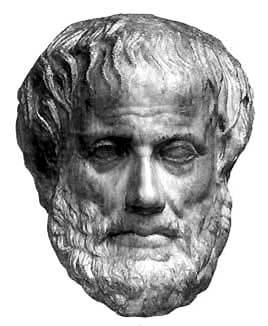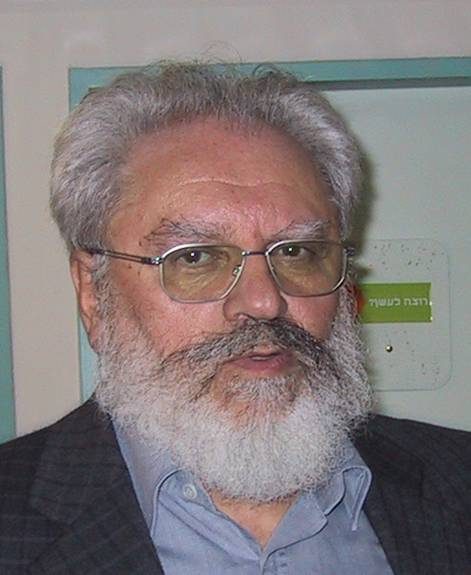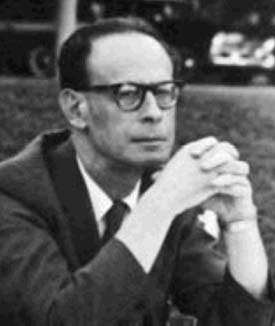Calculating the Limits of Poetic License:
Fictional Narrative and the History of Mathematics
Leo Corry - Tel Aviv University
| index | 2 | 3 | 4 |
1. Introduction:
The poet's function is to describe, not the thing that has happened, but a kind of thing that might happen, i.e. what is possible as being probable or necessary. The distinction between historian and poet is not in the one writing prose and the other verse–you might put the work of Herodotus into verse, and it would still be a species of history; it consists really in this, that the one describes the thing that has been, and the other a kind of thing that might be. Hence poetry is something more philosophic and of graver import than history, since its statements are of the nature rather of universals, whereas those of history are singulars. By a universal statement I mean one as to what such or such a kind of man will probably or necessarily say or do--which is the aim of poetry, though it affixes proper names to the characters; by a singular statement, one as to what, say, Alcibiades did or had done to him.
This famous passage was originally written more than 2000 years ago not far away from Mykonos by Aristotle,

as the opening lines of the ninth book of the Poetics. When Aristotle wrote these lines he was thinking about different, and indeed much broader, questions than those I will discuss here, and that relate to texts of narrative fiction about mathematical themes, or, for short, “mathematics in fiction”.[*] Nevertheless and perhaps unsurprisingly, Aristotle’s insights are also helpful in elucidating this narrower issue, as we will now see. In particular, I have emphasized two sentences of this passage that will provide a main thread of my argument here: “the thing that has been”, and “the thing that might be.”
In this article I seek to clarify the role played by poetic license in the triangular relationship involving mathematics, the history of mathematics and mathematics in fiction. This triangular relationship can be analyzed, in the first place, from the perspective afforded by the Aristotelian distinction quoted above. It can also be analyzed from the point of view of the kind of language typically used in texts produced in each of these realms or, alternatively, from the point of view of the nature of their expected audiences. It will be seen however, that the most illuminating perspective for this analysis is the one related with the kind of attitude that is expected from the reader in each case, whether critical or based on a suspension of disbelief. To the considerations that pertain to this latter perspective when it comes to texts of any kind, the peculiarities of mathematical texts add some unique twists.
My analysis starts with an inspection of various approaches to the relationship between mathematics and its history, and to how the latter should be written. I then move to analyze the idea of suspension of disbelief as a narrative strategy and consider its relationship to historical writing in general. This is done by looking at texts with only diagonal relation to mathematics, if at all, especially the short stories of Jorge Luis Borges. Against this background, I look at some specific examples of mathematics in fiction and consider how the triangular relationship is manifest there. The two main foci of my discussion are Apostolos Doxiadis’ short novel Uncle Petros and the Goldbach Conjecture and Ira Hauptman’s play Partition. Finally, I go the opposite way and analyze how narrative strategies are often imported from fiction to historiography (especially, but not only, in books of scientific popularization) and give raise to an over-dramatization of the history of mathematics (and of science in general). The example of Fermat’s Last Theorem is at the focus of this section. We end up having two different ways to blur the borderline between fiction and fact, that are differently motivated but that in many respects have similar effects on the reader.
It may be convenient to point out in this introductory section that the topic of this article can be seen as part of a more general one, namely that of the mutual interaction between science and literature. Recent studies have shown that this relationship has been a convoluted and variable one throughout history. Neither the borderline between the two domains has always been clear-cut nor has the influence been evidently unidirectional.[*] Rather than historical, however, my own account in this case is essentially “structural”. A specific aspect of the more general topic of literature and science that has attracted considerable attention pertains to the question of language, both at the level of the production of scientific and literary texts and at the level of their reading within a specific social, cultural and political context. Such studies are naturally related to constructivist approaches to the history of science.[*] I do not follow such an approach here or elsewhere, and in general it can be said that constructivist approaches have been much less followed in relation with mathematics than in relation with other fields of science.[*] Nevertheless, as already suggested, the different uses of language in each of the three realms considered will be also discussed as part of my analysis.
2
. Mathematics, History and Narrative - Three Kinds of Text:An illuminating connection between mathematics and the Aristotelian passage quoted above was established in the work of
Sabetai Unguru (no Greek philosopher himself in spite of appearances, but a Romanian-born Jew, who was my doctoral advisor at Tel Aviv University). By referring to Aristotle's distinction between history and poetry Unguru intended to stress a parallel distinction that in his view is fundamental, and should strictly be observed, when writing the history of mathematics. The “thing that has been”, which is the singular, the idiosyncratic, is the object of historical research, and the historian should strive to understand and convey it in her research. The “thing that might be”, ww hile of “more philosophical and of graver import” (and thus arguably more interesting), is none of the historian's professional business. But what Aristotle put forward here as a general distinction has a peculiar turn when it comes to mathematics since the latter – like Aristotelian poetry – deals with universal statements, statements “as to what such or such a kind of” entity “will probably or necessarily” behave like.[*]If Aristotle found it necessary to clarify the difference between the historical and the poetic approach to describing events of the past, he obviously felt that the borderline between the two could be somewhat elusive. The affinity between mathematics and poetry in the sense described above makes this borderline even more elusive, as Unguru showed in his own analysis. Indeed, in analyzing mathematics of the past mathematicians often look for underlying mathematical concepts, regularities or affinities in order to conclude about historical connection. Mathematical affinity necessarily follows from universal properties of the entities involved and this has often been taken to suggest a certain historical scenario that “might be”. But, Unguru warns us, one should be very careful not to allow such mathematical arguments led us to mistake historical truth (i.e., the “thing that has been”) with what is no more than mathematically possible scenarios (i.e., the “thing that might be”). The former can only be found by direct historical evidence.
Incidentally, the classical example of this debate concerns one of Aristotle's historical assertions, namely, that the Pythagoreans discovered the incommensurability of the diagonal and the side of the square. Aristotle says in the relevant passage that they proved this by a reductio ad absurdum argument since “odd numbers come out equal to evens” (Prior Analytics, I-23). If we now look at the standard modern proof of the irrationality of √2, we realize that it nicely fits Aristotle's description since it is indeed based on showing that a number that is assumed odd must necessarily be even. This underlying mathematical affinity is added to Aristotle's account – in the “poetic approach” to the history of mathematics – in order to infer the validity of a purely historical claim. It is thus inferred that the Pythagoreans proved the incommensurability of the diagonal of a square with its side exactly as we nowadays prove that √2 is an irrational number.[*] Unguru’s point of view, on the contrary, implies this conclusion is invalid and that, moreover, it embodies a historiographical point of view which is utterly wrong.[*]
Along the guidelines provided by the Aristotelian distinction Unguru in 1975 called attention to “the need to rewrite the history of Greek mathematics”.[*] His work immediately attracted furious reactions, above all from three prominent mathematicians interested in the history of mathematics: André Weil, Bartel L. van der Waerden, and Hans Freudenthal.[*] A main argument implicitly underlying their rejoinders concerned the question of authority on matters pertaining to mathematical knowledge. This authority seemed to be transgressed here by an outsider who dared to refute a claim that had never before been questioned by someone with what they saw as the required level of disciplinary authority. History or not history, this is mathematics at bottom and it is for mathematicians to decide - such would seem to be a position implied by Unguru's critics. Weil even had a very convenient opportunity to institutionally support this authority, as he delivered a plenary talk at the International Congress of Mathematicians (ICM) held in Helsinki in 1978, under the title: “History of Mathematics: Why and How?”.[*]
It is revealing that throughout the lecture Weil consistently used the term “mathematical history” (rather than “history of mathematics”). Clearly, his main point was not to discuss the “why” or the “how”, as the title had it, but rather the “who”. “How much mathematical knowledge should one possess in order to deal with mathematical history?”, he asked. And in his answer, as expected, authority plays an important role:
There is no doubt at all that a scientists can possess or acquire all the qualities needed to do excellent work in the history of his science; the greater his talent as a scientist, the better his historical work is likely to be.[*]
As a founding member of the Bourbaki group, Weil promoted not only many o f the b asic views of Bourbakian mathematics, but also of Bourbakian historiography, the latter being a most salient example of what Ivor Grattan-Guinness described as "the royal road to me"-kind of historiography.[*] Good history of mathematics is written, according to this view, based mainly on purely mathematical considerations and should thus be written only by mathematicians, preferably by prominent, retired ones. Being a French mathematician may also considerably help.
From a perspective of more than twenty five years, the kind of historiography promoted by Unguru has become mainstream and in need of no further justification. This is particularly the case concerning his views about algebra and geometry in Greek mathematics.[*] But what is of real concern for us in the present context is the parallel drawn by Unguru between Aristotle's illuminating contraposition of history to poetry, on the one hand, and of mathematics and its history, on the other hand. This parallel can be summarized as follows:
Mathematics History of Mathematics In Aristotle's distinction, parallel to ...
Poetry History
Deals with ... Universals Particulars
Attempts to describe ... ... what is possible as being probable or necessary ... the thing that has happened
Like poetry, mathematics deals with universals. Like poetry, mathematics attempts to uncover the behavior of such and such kind of universal entity by virtue of being what it is. Both poetry and mathematics attempt to spell out what such universal entities embody or – sticking to Aristotle’s own wording for the sake of symmetry – to say about them what is “possible as being probable or necessary”.[*] History on the contrary, has the much less glamorous task of indicating what actually happened, not what might have happened.[*] Only the dreary, particular details of what actually happened are of interest in history, and, as Unguru suggests, whereas universal ideas may suggest possible directions of search, they cannot be a substitute for historical evidence of some kind.
In my current analysis, I would like to go beyond the relationship between these two areas, mathematics and its history, and add yet another vertex to it, namely, that of fictional narrative on mathematics. Taking Aristotle’s distinction as a staring point, it seems natural to ask, in the first place, to what extent it is of any help in elucidating the triangular relationship that interests us here. On a first approach we may simply consider the fact that any fictional narrative falls squarely within the scope of poetry as defined by Aristotle, so that the distinction directly helps analyzing its relationship to the other two categories. Indeed, from the point of view of the question of universals vs. particulars, mathematics in fiction aligns together with mathematics and in opposition to history of mathematics, as indicated in the following table:
Mathematics, Mathematics in Fiction History of Mathematics Deal with ... Universals Particulars
Like all narrative fiction, mathematics in fiction may include real characters and real historical situations as part of the plot, but ideally these appear as archetypes that represent a universal person or situation. Authors of narrative fiction, and in particular mathematics in fiction, may try to remain as close as possible to what they consider to be the historical truth, but it is not inherent in the genre that this should be the case. More importantly, no reason can compel the reader to read the text other than as pure fiction – a point that I will stress again below.
At the same time, however, the Aristotelian distinction confronts us with a seemingly odd situation. Indeed, it would seem intuitively more natural to associate the two narrative activities (history and fiction) with each other, rather than contraposing them, as in Diagram 2. This seems all the more odd, if we take into consideration that in making his distinction Aristotle was implicitly taking for granted a classical conception that saw history as a literary genre (and indeed as a rather inferior one at that). This conception of history as narrative remained strongly ingrained for centuries to come and it was apparent even in nineteenth-century historiography. Positivist historians like Leopold von Ranke (1795-1886) – who led the efforts directed at turning history into a discipline based on scientific principles of objectivity and empirical evidence (Wissenschaft) – continued to stress the fundamentally story-like character of their endeavor.[*] The Aristotelian distinction itself, on the other hand, although it continues to be fundamental to the very general question of the relationship between “literature” and “history”, needs to be reconsidered from the perspective of more recent developments in literary theory.[*] One additional, possible perspective from which to look at the triangular relationship that we are considering here concerns the kind of language typically used in representative texts of each of the three disciplines. Seen from this perspective, mathematics in fiction and history of mathematics do align together and as opposed to mathematics, as described in the following diagram:
Mathematics History of Mathematics, Mathematics in Fiction Language typically used Formal, Formalized Discursive, Natural
It goes without saying that in their usual appearance, mathematical texts are never fully formalized. They may contain formulas and even entire arguments rendered in purely symbolic terms. But except for very extreme cases,[*] significant parts of any mathematical argument are always put forward in, or mixed with, natural language. On the other hand, these texts are never truly discursive and they will always contain, at the core, a formal, semi-formal, or at least, formalizable argument. Texts on the history of mathematics and mathematics in fiction may typically contain formal, semi-formal or formalizable parts themselves, but once again, they will always contain a discursive core. In a spectrum going from the purely formal to the purely discursive, mathematical texts will be closer to the formal extreme, whereas historical and fictional texts about mathematics will be closer to the discursive extreme.
Yet a third perspective from which to analyze the triangular relationship is by looking at the audiences to which the various kinds of texts are intended in each case. Here history of mathematics can simultaneously align with both mathematics and mathematics in fiction, as summarized in the following diagram:
Mathematics, History of Mathematics History of Mathematics, Mathematics in Fiction Expected audience Specialized General
Mathematical discourse typically targets a more specialized readership, whereas mathematics in fiction typically targets a less specialized one. In history of mathematics both situations co-exist.
The above three perspectives provide useful hints concerning the triangular relationship investigated here. However, by and large, the most significant and illuminating perspective from which this relationships is understood is, in my view, provided by looking at the different, basic attitudes required by the reader when faced with the texts of each kind. The schematic diagram that summarizes this dimension is the following:
Mathematics, History of Mathematics Mathematics in Fiction Expected reader's attitude Critical Suspension of Disbelief
This point requires some further elaboration, which I proceed to consider in some detail in the next section.
| index | 2 | 3 | 4 |

